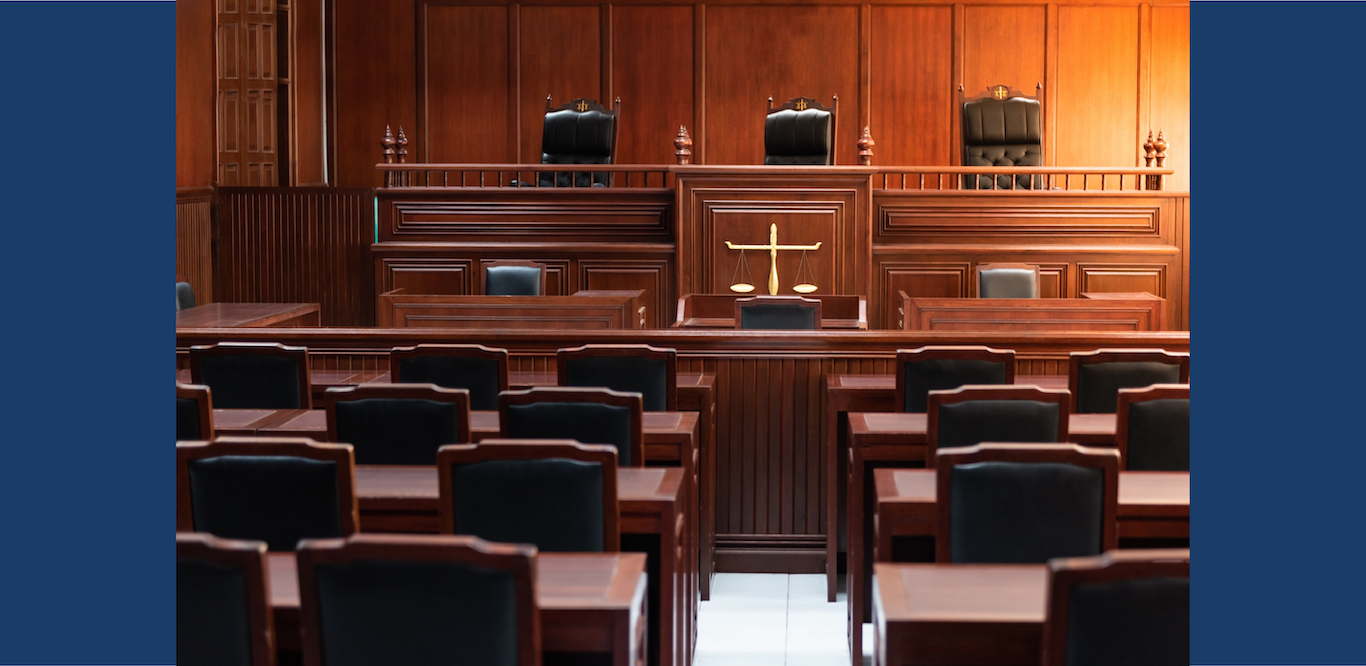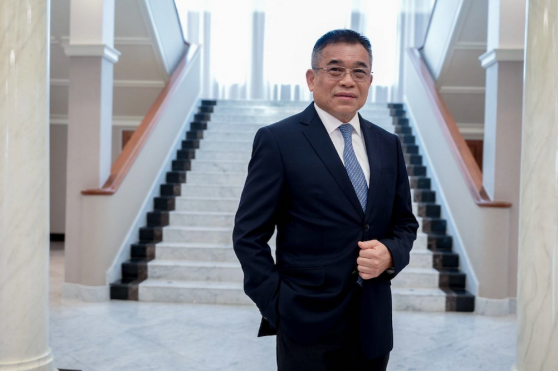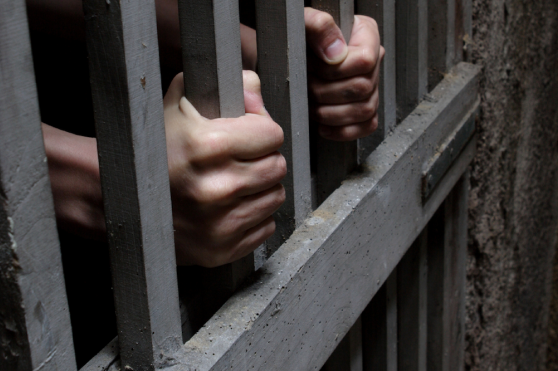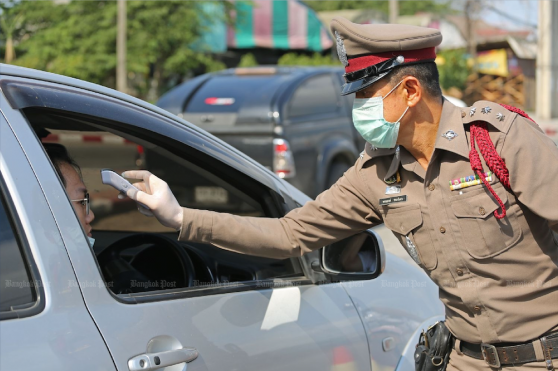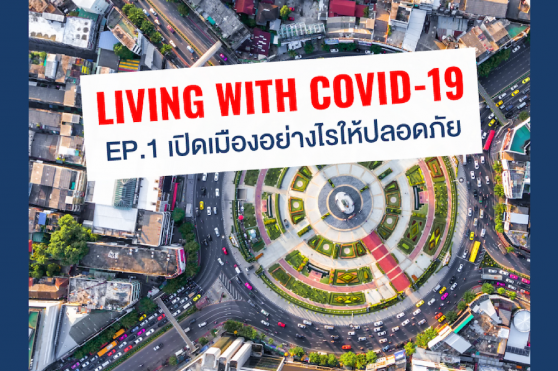New Normal for the Court of Justice in the time of COVID-19 – Court “opened” as the source of legal studies with easy access and convenient litigation search for all cases
“In the past, the Supreme Court is perceived as a land of mystery, unapproachable and predatory. I will open the Court to the public so people can come and see how the Supreme Court functions. I will invite legal professionals and university students to witness the operation of the Supreme Court, to see its systems of trial and verdict. They will see that the process of work here is not secretive but transparent and examinable. The Supreme Court will become the learning source of lawyers and the general public. The parliament is opened for visits on Children’s Day; the Supreme Court can do the same.”
“Making the Court accessible to the public” is another effort to change the “mindset” towards the Court of both its personnel and the public. The President of the Supreme Court shared during the discussion that the Working Group of the Office of the Court of Justice is now preparing to “Open the Supreme Court” as the knowledge centre for the people. The Court can be the learning ground for Thailand’s legal history and history of the Supreme Court. The public can learn the detailed process, meticulous consideration and verification involved in rendering a verdict. The approach is based on the underlying concept of making the “Court of Justice” a true sanctuary of the people.
From a secretive and untouchable institution, the Court can finally be a convenient place, resulting in increased public confidence. After the Supreme Court is opened, the Appellate Court can follow suit.
The President shared that the Court has shifted its practice during this time of COVID-19 to prevent gathering at the Court. Only the relevant persons will be allowed inside the courtroom with the implementation of social distancing measures according to the recommendation of the Ministry of Public Health. The trial of 160 thousand cases has been postponed to date on the basis that such delay shall not cause any damage to either of the disputing parties. It is estimated that within June, July to August, the Court should return to its full operation. The cases postponed will be trialled without delay and additional working days will be set for certain weekends to ensure that the timeframe for each case will go as initially planned. The cases in the Court of First Instance should not take more than two years per case and not more than one year each for the Appellate and Supreme Courts. The Court of Justice is well aware of the past criticism that “Delayed justice is injustice”.
Other measures implemented to ensure the smooth operation of the judicial process during the time of the pandemic cover witness examination via VDO conference. This method is normally used in civil intellectual property or international trade cases and has been adopted for other cases as well. Another method is witness examination in separate courtrooms, and this is also the method used in the trial involving children and adolescents.
Temporary release procedure is another method supported by technology, shared the President. In normal circumstances, the defendant applying for release would be physically brought to the Court for inquisition, but now the Court conducts inquisition via VDO conference with the defendant in prison. Similar to the reading of the verdict via VDO conference if the defendant is already in prison. By not requiring the physical presence of the defendants, it reduces the risk of them being infected and also the risk of escape or abduction for some cases.
The President of the Supreme Court concluded that the effort to change the policies of the Court would require the change of mindset of the entire personnel of the Court and judicial process itself. The core principle is “Until proven guilty; a person is entitled to full protection unless there is an inclination that the person is harmful to the public”. If the Court has passed the final verdict, the penalization shall be proportionate to the offence and not necessarily have to be imprisonment. To achieve this, an intensive collaboration among the entire legislative body is required, so that the Court of Justice can truly be the pillar of hope for the people.
“Escape Risk Evaluation” a new form replacing “bail security” aimed to reduce the disparity between the rich and the poor
“Escape Risk Evaluation” is the new criteria used for temporary release consideration, replacing the requirement of the high bail amount as it causes disparity between the rich and the poor. Even though alleged with the same offence, the rich can afford bail and defend themselves in Court while the poor remain in prison even though eventually they may be proven innocent.
 Mrs. Methinee Chalothorn, Vice President of the Supreme Court, presented the form used to evaluate the risk called “Kam Rong Bai Diao” or “one-page petition” in English. It is the temporary release petition that does not require any security. The applicant does not have to declare his/her assets because the Court may not require any. If the penalty is less than ten years, the Court may grant no-security temporary release or may require that an agreement is entered into without any security.
Mrs. Methinee Chalothorn, Vice President of the Supreme Court, presented the form used to evaluate the risk called “Kam Rong Bai Diao” or “one-page petition” in English. It is the temporary release petition that does not require any security. The applicant does not have to declare his/her assets because the Court may not require any. If the penalty is less than ten years, the Court may grant no-security temporary release or may require that an agreement is entered into without any security.
“Our goal is to encourage more temporary release. We want to release more people from prisons by reducing bail security requirement as long as societal safety is maintained while reducing unnecessary imprisonment.”
The Vice President of the Supreme Court provided that the “proactive approach” which sent judges to prisons intended to explore the reason why prisoners did not file petition for temporary release; whether or not they are aware of their rights to file for such release without bail; what are the impacts from being in prison and; what are their expectations. It found that 80 per cent of prisoners on remand were not aware that they are eligible for no-security temporary release. This reflects insufficient information communication with prisoners. There has been an establishment of 10 “Model Courts” with Thonburi Criminal Court as the central Court along with provincial courts in other nine regions i.e. in Nakhon Nayok, Nakhon Ratchasima, Lamphun and Phuket. The intention for such establishment is, within this June, 70 per cent of the total of 269 Courts of First Instance will successfully adopt the “proactive approach”, and every Court of First Instance shall be able to do the same within September. The implementation of this proactive approach will reduce the number of prisoners on remand at the level of the Court of First Instance.
The conditions of the temporary release will be different on a case by case basis. This may include intervals of reporting to the Court or utilization of electronic monitoring (EM). If the defendant does not have any family or relatives, a supervisor who the defendant trusts or respects or who is well-trusted by the community will be assigned, such as sub-district or village chief. The designated personnel will supervise the released defendants instead of requiring them to report directly to the Court. In support of this process, the Court of Justice had already executed an MOU with the Ministry of Interior years ago.
Besides prisoners on remand, there is also prisoners detained in lieu of a fine. The Vice President emphasized that “This group of people are only subject to a fine, they should not be detained in prison,” but they are imprisoned because they cannot afford to pay for such fine. The in-lieu rate imposed by law is THB 500/day of imprisonment. However, the law also allows social or public services in lieu of a fine as well, such as working in hospitals, sweeping roads or cleaning. The latest statistics indicate that a number of prisoners detained in lieu of a fine significantly decreased; hence, it is another approach to reduce unnecessary imprisonment.
In relation to the societal safety concerns from the temporary release, Mrs. Methinee confirmed that the risk evaluation form used was developed based on the research on behavioral science conducted by the Office of the Court of Justice in collaboration with Rabi Bhadanasak Research and Development Institute and Srinakharinwirot University. The research provides indicators and statistical result for evaluation of high, medium or risk of escape.
COVID-19 crisis give rise to an opportunity for the Court of Justice to implement technology in the judicial process, reduce court visits and speed up the process
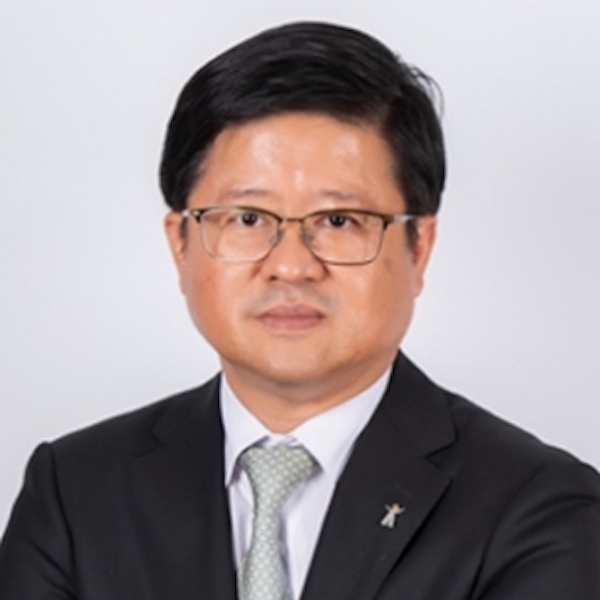 Mr. Sarawut Benchakul, the Secretary-General of the Office of the Court of Justice, provided that there are more than 10 million people who became involved in the judicial process each year. Therefore, there is a plan to transform the Court into Digital Court in the year 2020 with the aim to adopt the proactive approach and enhance public accessibility and the process of which is driven by COVID-19 situation. All cases filed to the Court of Justice will have a 2-year timeframe in the Court of First Instance and one year in the higher Courts whereby the progress will be monitored. Technology will also come into play to ensure higher efficiency.
Mr. Sarawut Benchakul, the Secretary-General of the Office of the Court of Justice, provided that there are more than 10 million people who became involved in the judicial process each year. Therefore, there is a plan to transform the Court into Digital Court in the year 2020 with the aim to adopt the proactive approach and enhance public accessibility and the process of which is driven by COVID-19 situation. All cases filed to the Court of Justice will have a 2-year timeframe in the Court of First Instance and one year in the higher Courts whereby the progress will be monitored. Technology will also come into play to ensure higher efficiency.
In respect of civil cases, case information service system or “Case Information Online Service (CIOS)” is available and compatible with the traditional paper-based trials. CIOS also involves case progress tracking, online filing, free online case document request. There is also an e-Filing system which facilitates the filing process of the statement of claim and other case documents replacing the traditional paper-based system whereby all hard copies need to be filed physically to the Court. The system will facilitate the faster and more convenient process, anywhere, anytime. From the data as of 16th of May 2020, there are a total of 56,144 cases filed through e-Filing system at 160 Courts with a total number of registered attorneys is at 7,821. Moreover, there is also a policy allowing the public to obtain copies of the verdict within 10 working days after its reading.
Another measure that facilitates faster process is online mediation. For cases that are required by law to have pre-trial mediation or negotiation, i.e. consumer or labor disputes, the online mediation system will be implemented. Currently, 117 Courts have adopted the system. If the disputing parties can agree, the case will not go to trial and at the same time, parties will remain satisfied with their agreement.
During the past two years, the Office of the Court of Justice had entered into agreement(s) with the Royal Thai Police allowing the police to file arrest and search warrants online. There has to be an exchange of data from the databases of the Royal Thai Police and the Court to ensure consistency. This also includes the exchange of information on travel ban, which is also linked to the database of the Immigration Bureau. On the use of EM wristbands, the Court currently has 5,000 wristbands which can be used efficiently in cases of temporary release with inadequate bail security or in cases where tracking is deemed appropriate.
The change of mindset toward the judicial process has to be practically implemented starting by reducing the cases before reaching the Court
 Prof. Dr. Surasak Likasitwatanakul, Chairperson of the Board, TIJ, provided that the Court will not be able to achieve the aforesaid initiatives alone. Because when a case is filed to the Court, the Court has the duty to reconcile the case. We can see from the data that, annually, 60 per cent of almost 700 thousand criminal cases filed were disputes among private parties who wished to employ the State’s mechanism for dispute resolution, and they would withdraw the case once the debt has been paid. Therefore, without the change of mindset in the practice of the judicial process, the efforts to amend and update the law to better protect the rights and freedom of the people would be futile. For example, judges who had never granted bail were never investigated while judges and also public prosecutors who had done so were subject to investigation. It will be more beneficial if trust can be established in every step of the judicial process. If the people are afraid of approaching a police station or concern with case tampering when they meet with a public prosecutor or even fear of seeking help from the Court, it will be even more challenging to access the judicial process. One of the examples is the understanding that high amount of money is required for bail, which prevents filing of temporary release.
Prof. Dr. Surasak Likasitwatanakul, Chairperson of the Board, TIJ, provided that the Court will not be able to achieve the aforesaid initiatives alone. Because when a case is filed to the Court, the Court has the duty to reconcile the case. We can see from the data that, annually, 60 per cent of almost 700 thousand criminal cases filed were disputes among private parties who wished to employ the State’s mechanism for dispute resolution, and they would withdraw the case once the debt has been paid. Therefore, without the change of mindset in the practice of the judicial process, the efforts to amend and update the law to better protect the rights and freedom of the people would be futile. For example, judges who had never granted bail were never investigated while judges and also public prosecutors who had done so were subject to investigation. It will be more beneficial if trust can be established in every step of the judicial process. If the people are afraid of approaching a police station or concern with case tampering when they meet with a public prosecutor or even fear of seeking help from the Court, it will be even more challenging to access the judicial process. One of the examples is the understanding that high amount of money is required for bail, which prevents filing of temporary release.
Prof. Dr. Surasak also raised another major issue which is the overflowing of the caseload in the judicial system each year is much higher than the number of judges. Hence, judges will have to take on the extra workload. Therefore, the investigators have to improve their negotiating skills, and public prosecutor should be more involved in the case.
“For example, among the total of 1,729,844 cases, there are 1,118,431 civil cases and 611,413 criminal cases. Currently, there are 4,771 judges; therefore, the average number of cases each of them has to be responsible for is 362 cases per person, which is considerably high.”
Prof. Dr. Surasak also pointed out the fluctuation in the number of prisoners and the excessive budget required to take care of them instead of being used for other public purposes. He presented that Thailand spent THB 54 per prisoner per day. That is equivalent to almost THB 20 million per day and THB 7 billion per year.
Upstream integration of the judicial process – alternative measures to prevent New Abnormal Crime
“In the future, many businesses will collapse. Blue-collar crime, stealing, snatching, and robbery will be on the rise and committed in new shapes and forms. Also, with the rise of AI, crimes will be committed in virtual communities such as cyberbullying. The offenders during this period of New Normal will be considered as both the offender and victim of COVID-19 situation. The question is, how the offender will be treated and what the government’s approach would be.”
 The observation of Assoc. Prof. Dr. Jutharat Ua-amnoey, special lecturer of Sociology and Anthropology Department, Faculty of Political Sciences of Chulalongkorn University, indicates that COVID-19 is the new power that threatens and pushs us into this era of New Normal. In this regard, the orientation of the practice of the Court of Justice will involve 3 phases: (1) reviewing of the Court’s operation in 2018-2019; (2) recognition that we are in the new abnormal era; and (3) prediction of what the situation would be like when the full-on New Normal arrives.
The observation of Assoc. Prof. Dr. Jutharat Ua-amnoey, special lecturer of Sociology and Anthropology Department, Faculty of Political Sciences of Chulalongkorn University, indicates that COVID-19 is the new power that threatens and pushs us into this era of New Normal. In this regard, the orientation of the practice of the Court of Justice will involve 3 phases: (1) reviewing of the Court’s operation in 2018-2019; (2) recognition that we are in the new abnormal era; and (3) prediction of what the situation would be like when the full-on New Normal arrives.
Firstly, looking back to 2018-2019: the statistics reveal that the Court of First Instance was very successful in prosecuting 94.03 per cent of the cases in 2018. However, from the criminology perspective, this means that there was a full utilization of the courtrooms. Since COVID-19 can be transmitted through contact, the 100 per cent usage of the courtrooms would cause widespread of the virus.
Considering the cases in 2018, top 5 offences on the rise are (1) narcotic; (2) traffic; (3) gambling; (4) firearms-related; and (5) property-related offences. The first four offences are Mala Prohibita cases and are victimless by nature. The criminal nature of these offences is considered low, but they took up 60 per cent of the Court’s resources. This reflects that the Court is spending its resources on insubstantial cases.
The research conducted by TDRI and Rabi Bhadanasak Research and Development Institute reveals that the Court of First Instance usually imposed imprisonment penalty for every cheque-related offence. Considering the major economic impact of COVID-19, it is highly probable that more people may be imprisoned as a result of such impact.
The research also shows that Courts of First Instance imposed imprisonment penalty for 73.3 and 51.9 per cent of theft and assault offences respectively, while imprisonment and fine were imposed on 60.6 per cent of narcotic offences. In almost all of the case studies, the Supreme Court imposed imprisonment penalty for all offences. The fine penalty would be imposed only when there is a suspended imprisonment sentence.
Hence, there is not many alternatives to penalization.
Assoc. Prof. Dr. Jutharat proposed integration between the legislative body and the Court which are the major actors in the judicial process. The legislative body is upstream and in charge of law enactment, if legal penalization cannot be changed, the Court, which is downstream, will not have the alternative to sentence otherwise.
In terms of future projection of crime, there was a time when the rate of blue-collar crime was exceptionally high, leading to the establishment of Bang Kwang facility. During which period, suppression of stealing, snatching, robbery was successful. Later on, we moved on to the era of 2G and 3G and the rise of white-collar and transnational crimes. In the future, it is predictable that blue-collar crime will reemerge from the collapse of many businesses. Particularly with AI technology, the crime will be committed in virtual communities like cyberbullying. It was observed that offenders of crime during New Normal era as a result of circumstantial shock will be considered as both offenders and victims of COVID-19 situation.
Assoc. Prof. Dr. Jutharat proposed solutions to judicial administration and justice delivery through the integration and clear orientation of the legislation and law enforcement process.
In relation to judicial administration, the Courts are currently undertaking two approaches. The first one is a paperless operation which is quite successful and should be connected throughout the process from police, public prosecutors and Courts. The second one is the application of a remote operation system such as VDO conference which should be further expanded.
An alternative to imprisonment is another measure proposed by Assoc. Prof. Dr. Jutharat to be implemented in the judicial process administration. The costs of prison management are high, and especially in this New Normal period, the government will have to allocate its budget to solve many more pressing issues. In the future, cases that will emerge will be hate crimes, i.e. crimes against foreigners who are COVID-19 patients or other crimes originated from hatred. Crimes of this particular nature should not be penalized by imprisonment.
For example, Obama’s administration issued policy encouraging reconciliation of this type of offence. There are also crimes against the State, such as environmental crimes, i.e. forestry. Additionally, community justice and restorative justice should be implemented in which the community can take part, and this will benefit the vulnerable and marginalized groups.
Prof. Dr. Kittipong Kittayarak, Executive Director, TIJ, concluded by emphasizing that the initiative of the executives of the Court of Justice is the new hope of the country. It is the effort to affect change from the underlying mindset through the hearing of opinions of all stakeholders may it be the suspects, defendants, victims and the general public. This effort led to the proactive approach whereby judges were sent to witness first-hand the problems that occurred in prisons. Even more importantly, it led to the change in the temporary release procedures whereby the “Court” developed a form to assess the risk of escape and potential societal harm. Such form is used to consider whether the defendant should be granted bail instead of “money”. It is proven that bail security guarantee is not the most crucial factor, and it prevents those with low financial capacity from receiving true and equitable justice. The effort to resolve the issue of imprisonment in lieu of a fine is also another good initiative. These approaches of the Court of Justice would be well-supported by the academic sector.
The Executive Director of the Thailand Institute of Justice also supported other measures of the Court of Justice, including the use to electronic monitoring wristband or EM as the tracking device of the suspect. This will increase the confidence of both the Court of Justice and the community and at the same time, allows the offender to make a living. Other measures include community supervision, online mediation, and reading of verdict via VDO conference. More importantly, the concept of rehabilitation of drug offenders which constitute the highest number of inmates even though they do not necessarily have to be imprisoned.
All of the approaches will have to go through the amendment of laws, building of community understanding and development of a reliable tracking system. The Court is encouraged to continue to implement these measures as the core that will lead to other major changes in the judicial system.



